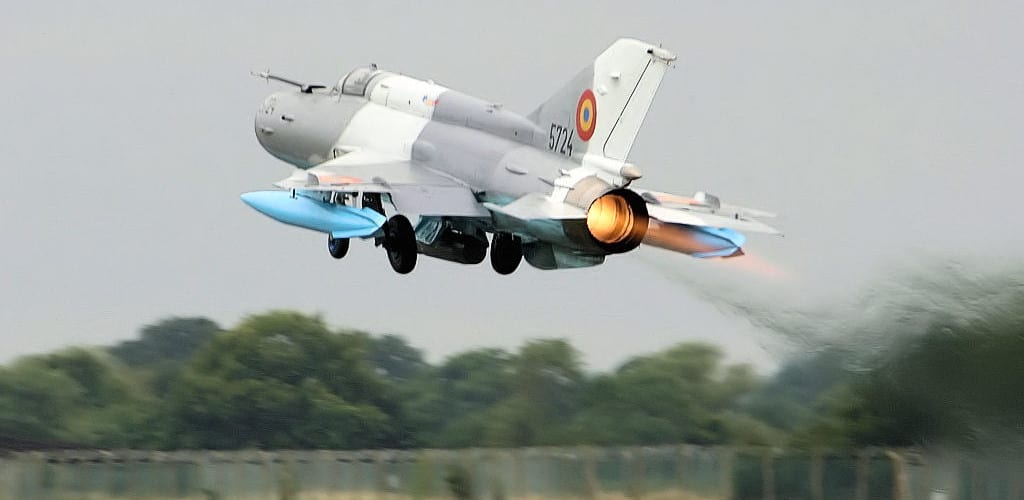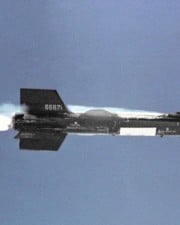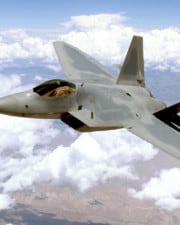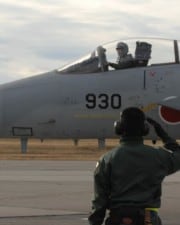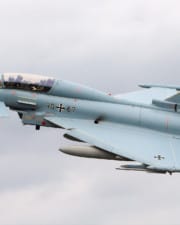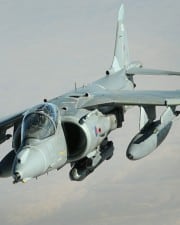For years fighter jets were required to have two engines. That recently changed with the development of the F-35 Joint Strike Fighter. The most advanced fighter jet in the world is a single engine plane again. Is one engine better after all?
The first fighter jets were powered by single engines designed for air-to-air combat against other fighters as well as ground attack. These conventional single-engine fighters were lighter, cheaper, and easier to maintain than modern advanced fighter jets.
In the history of aircraft development up to the period before World War II, mostly single-engine fighter planes were produced. The aviation industry focused its efforts on designing and producing single-engine military aircraft that could be efficient in short-range aerial combat.
Throughout the Second World War, the majority of fighter planes were all-metal monoplanes geared with batteries of cannons and machine guns and few could reach 400 mph speeds.
A large number of fighters up to this time had a single-engine, but several fighters were already fitted with twin-engines. In comparison to twin engines, single-engine fighters had lower weight and therefore had better thrust-to-weight ratio thus better maneuverability.
For years, one of the key developmental requirements of the U.S. Navy was for fighter jets to have two engines. The main reason for this is redundancy in case of engine failure over the ocean. The F-35 has made an end to that long standing requirement for a variety of reasons.
This is a list of the best single-engine fighter jets ordered according to its age.
1. Lockheed P-80 Shooting Star
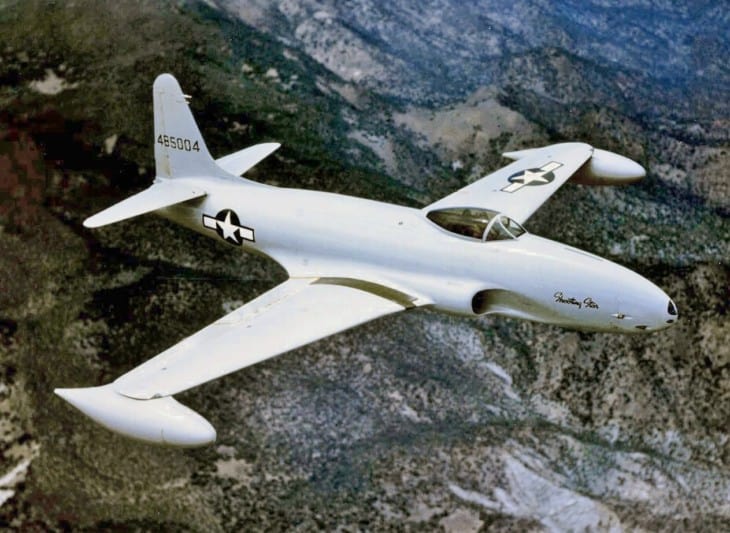
The first American combat-ready fighter jet that came out victorious in the first all-jet battle in the world.
The P-80 Shooting Star is undeniably the most successful first-generation fighter jet in the world.
The shooting star was fast as its name with a top speed of approximately 600 mph. It was designed with straight wings, conventional all-metal airframe, thin low wing, tricycle undercarriage, and the first operational jet fighter to fit the engine close to the center of the fuselage for the center of gravity.
The P-80 Shooting Star is powered by an Allison J33-A-35 centrifugal compressor turbojet with 4,600 lbf dry thrust and 5,400 lbf with water-alcohol injection. It has a single-stage, double-sided centrifugal compressors, 14 can type stainless steel combustion chambers and a single-stage axial turbine.
2. Lockheed F-104 Starfighter

The supersonic interceptor aircraft that set numerous world records in terms of speed and altitude.
The F-1-04 Starfighter was the first operational aircraft capable of sustained Mach 2 flight, with its airspeed and performance that remained monumental for many decades.
The Starfighter features a lightweight design with an all-metal airframe built primarily of duralumin, thin supersonic wings, and upward-firing ejection seats for the later versions. In terms of armament, it is loaded with an M61A1 Vulcan 6-barreled Gatling cannon and a combination of four AIM-9 Sidewinder missiles and other bombs and rockets.
A single General Electric J79 axial-flow turbojet engine propels the Starfighter. It has a maximum dry thrust of 10,000 lbf and 15,600 lbf with afterburn. The engine was initially designed for sustained Mach 2 flight. It has a single-spool 17-stage axial compressor, an accessory drive section, a three-stage turbine, a cannular combustor, and an afterburner.
3. Mikoyan-Gurevich MiG-21

The witness of history and the evolution of time.
The supersonic jet fighter and interceptor MiG-21 has been in service for six decades in different parts of the world. It had the longest production run of any combat aircraft in aviation history, flown by approximately sixty countries, and operated by almost forty air forces around the globe.
The MiG-21 was the first successful Russian-built aircraft incorporating both characteristics of a fighter and an interceptor in one aircraft that stood the test of time. It would transcend Mach 2.0, with an internal cannon and can carry a variety of missiles, bombs, and rockets.
The supersonic jet’s engine is powered by a single Tumansky R-25 turbojet with a distinguishing feature of a second fuel pump in the afterburning stage. The engine is a two-spool axial-flow turbojet that has a maximum afterburning thrust of 15,640 lbf.
4. General Dynamics F-16 Fighting Falcon

The first fighter aircraft custom-built to pull nine times the force of gravity.
The F-16 Fighting Falcon has showcased its ability in air-to-air combat and air-to-surface attack with a relatively low cost and powerful weapon systems for the United States Air Force.
The F-16 Fighting Falcon is the first fighter built to be unstable to enhance maneuverability. The enhanced maneuverability while a decrease in controllability causes a fly-by-wire flight control system to manipulate the aircraft to obtain the desired outcome without loss of control.
The aircraft is powered by a General Electric F110-GE 129 afterburning turbofan with a maximum thrust of 17,155 lbf or a Pratt and Whitney F100-PW-229 afterburning turbofan with a maximum thrust of 17,800 lbf.
5. Dassault Mirage 2000

A single-engine fourth-generation fighter and a proven jet with modern capabilities.
The Mirage 2000, designated as Vajra by India is one of the most lethal fighter aircraft and best multirole fighter of the IAF. The upgraded version is equipped with state-of-the-art technologies to improve operational life by around twenty years.
The multirole fighter is equipped with a fly-by-wire technology and a Sextant VE-130 head-up display for presenting data connected to flight control, navigation, target engagement, and weapon firing. It is armed with air-to-air and air-to-surface missiles, guided and unguided bombs, rockets, and two DEFA 554 revolver cannon.
The Mirage 2000 is equipped with a SNECMA M53-P2 afterburning turbofan engine with 14,500 lbf dry thrust and 21,400 lbf with afterburn. It is a single-shaft turbofan with an eight-stage axial compressor, two-stage axial turbine, and an annular combustor.
6. Saab JAS 39 Gripen
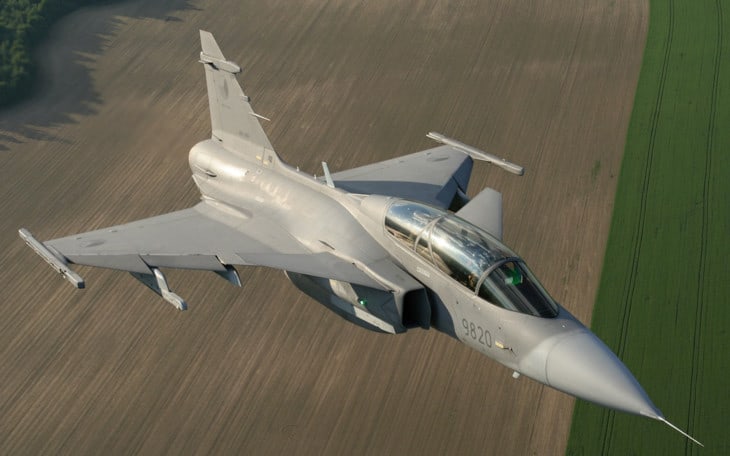
An exceptional air defense platform for Sweden and its European customers.
The JAS 39 Gripen is equipped with fully integrated avionics, modern weapons, and other advanced technologies that complemented its ability as a multirole fighter.
The one superior edge of this fighter aircraft which was an initial design requirement is its ability to take off fully loaded from a snow-covered runway of only 800 meters, also, a ten-minute turnaround time where it would be able to replenish fuel, re-arm, and carry out necessary inspections and servicing.
The JAS 39 Gripen is powered by a Volvo RM12 low-bypass afterburning turbofan engine. It has a maximum military thrust of 12,000 lbf and 18,100 lbf with afterburner. Engine development includes increased performance and reliability, weight reduction, and higher resistance against bird strike incidents.
7. Chengdu J-10
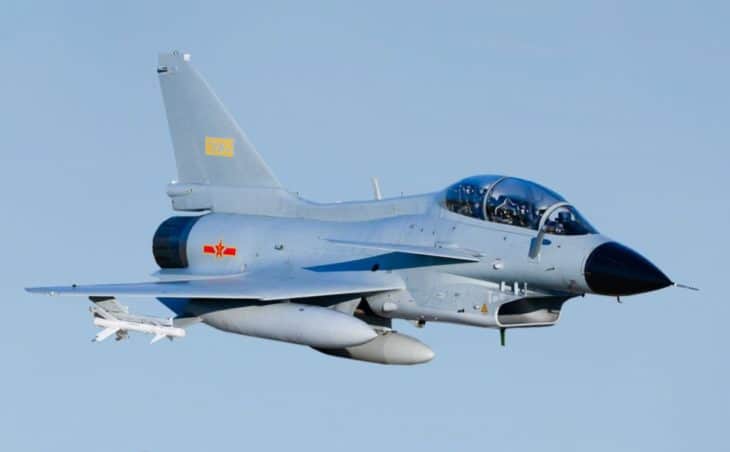
A jet fighter that represents a significant milestone for the industry of China.
The Chengdu J-10, also known as the Vigorous Dragon, is an indigenously built multirole tactical fighter that is suitable to the People’s Liberation Army Air Force’s warfare, capable of all-weather operation, showcasing domestic air superiority, close air support, and air interdiction.
China’s strategy to build a fourth-generation fighter aircraft externally similar to the IAI Lavi, called by some as a melting pot of foreign technology and acquired design methods, the Chengdu J-10 is a very competent multirole fighter which provides modern technologies for the use of the PLAAF.
The WS-10 Taihang engine was the initial plan for the J-10, however, due to development difficulties, it was opted to be powered by the Lyulka-Saturn AL-31F turbofan engines. The single Russian engine has a maximum dry thrust of 17,860 lbs and 28,000 lbf with afterburner.
8. HAL Tejas
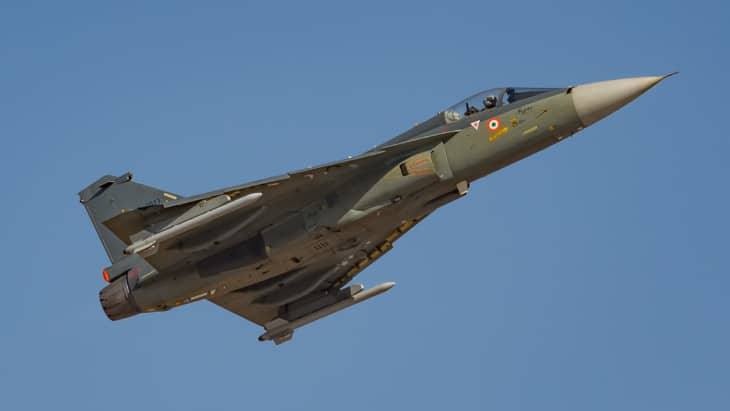
A revolutionary fighter for India’s air defense preparation for the battlefield.
The single-engine Tejas is a fourth-generation, supermaneuverable multirole light fighter. It is the second supersonic fighter jet produced by the Hindustan Aeronautics Limited, with an unstable design integrated with relaxed static stability that enables it to have better agility and maneuverability compared to any other fourth-generation fighter of its kind.
One feature of Tejas is its low wing loading which effects greater agility, better climb rate which is an edge in Himalayan regions, and finer cruising performance due to the less thrust it needed to maintain stability in flight. The Tejas incorporates technologies such as quadruplex digital fly-by-wire system, multi-mode radar, digital avionics suite, and electronics warfare suite.
The supersonic Tejas is powered by the General Electric F404-GE-IN20. It is rated to provide 12,100 lbf dry thrust and 20,200 lbf thrust with afterburner. The engine deploys the up-to-date hot section materials and technologies and features an advanced Full Authority Digital Engine Control (system (FADEC).
9. CAC/PAC JF-17 Thunder

The hallmark of the defense production of Pakistan and accounted as a successful light combat aircraft.
The JF-17 Thunder is a joint development of the Chengdu Aircraft Corporation in China and the Pakistan Aeronautical Complex.
The fighter features a glass cockpit that is covered by a customized canopy for a better field of view. It incorporates advanced avionics and the concept of open architecture. The communication system has two VHF/UHF radios, an airborne early warning, and control system, and enhanced situational awareness, allowing the pilot to focus more on combat rather than flying the aircraft. The Thunder can fire a wide range of aircraft ordnance, including air-to-air, air-to-surface and anti-ship missiles, a GSH 23-2 twin-barrel cannon, and guided and unguided bombs.
The JF-17 Block 2 is powered by a single Klimov RD-93MA afterburning turbofan with digital electronic engine control. It has a dry thrust of 11,300 lbf and 19,200 lbf with afterburn.
10. Lockheed Martin F-35 Lightning II
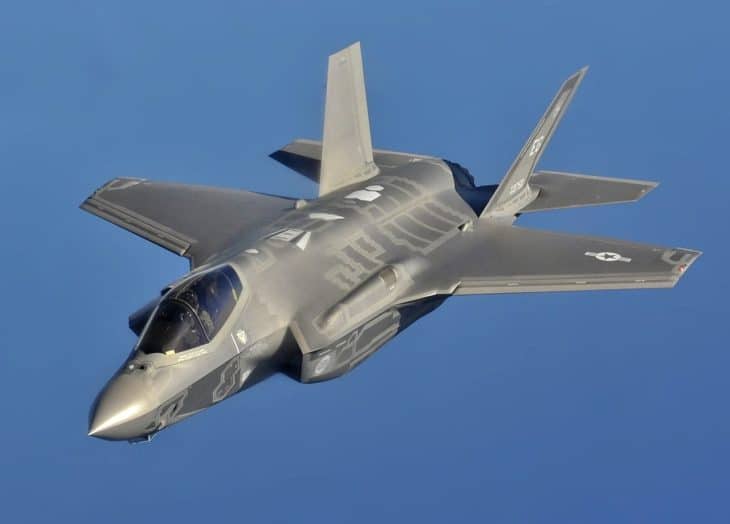
The most lethal, survivable, and connected fighter jet ever built.
The F-35 Lightning II is a fifth-generation fighter designed to conquer the modern threat systems in the present times by providing air superiority, electronic warfare, and serving as an intelligence, surveillance and reconnaissance asset which gives information to all networked land, air, sea, and space assets in the battle space.
The F-35 Lightning II features advanced stealth that enables it to evade and operate in an anti-access/area-denial area and the technologically-advanced sensor package for unmatched situational awareness. It is also armed with a wide range of missiles, bombs, and a rotary cannon.
The single-engine F-35 Lightning II is powered by the Pratt and Whitney F135 afterburning turbofan- an engine developed exclusively for the aircraft. It is a low-bypass augmented turbofan with a maximum thrust of 43,000 lbf, which enables the fighter to propel to speeds of about 1,200 mph.
Related Posts
